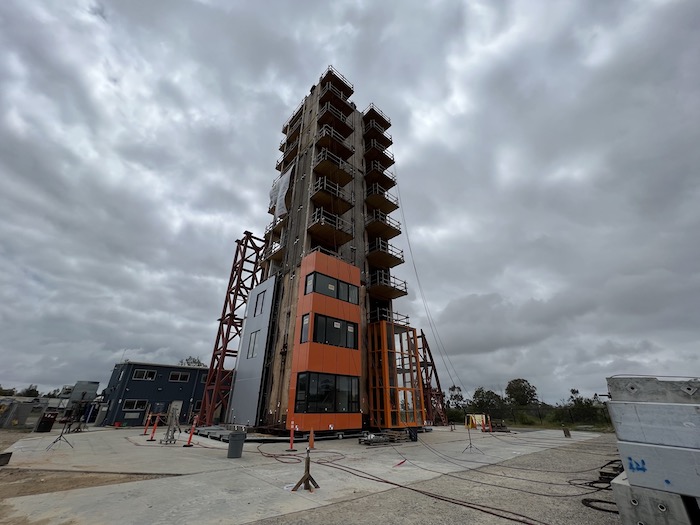
RJC helps test world’s tallest full-scale building on earthquake simulator
May 12, 2023
By CCE
The building includes three storeys of enclosure systems
Canada’s RJC Engineers is participating in the seismic testing of the Natural Hazards Engineering Research Institute (NHERI) TallWood project in San Diego, Calif. The world’s tallest full-scale building ever tested on an earthquake simulator is expected to help guide sustainable design and construction in Canada.
Funded by the U.S. National Science Foundation (NSF), the first-of-its-kind project aims to investigate mass-timber buildings’ earthquake resilience by testing a 10-storey structure on the Engelkirk Structural Engineering Center’s shake table, under the auspices of the University of California’s (UC’s) Jacobs School of Engineering. The research will inform the possible need to alter the architectural detailing of a building enclosure to assure resilient performance through natural building movements from both regular use and seismic events.
The building (pictured) includes three storeys of enclosure systems. The testing will assess their interaction with the structure, to help develop and validate seismic design methodology. RJC, for its part, will study the impact of earthquakes ranging in magnitude from four to eight on the integrity of windows, which are critical to a building’s overall energy efficiency and safety.
Insights gleaned from the testing will be particularly relevant in British Columbia, where new code changes require developers to commit to greenhouse gas (GHG) intensity targets. Following a seismic event, damage to windows can cause air to escape through the seals, leading to unseen breaches that are expensive to repair and, as a result, impairing energy performance and driving up carbon emissions through fuel consumption.
“As a company with extensive experience in building structure and envelope, we understand the importance of sustainable solutions that can help reduce the carbon footprint of the built environment,” says RJC principal Dennis Gam. “The opportunity to observe testing of a potential future mass-timber archetype and examine its influence on energy performance is a vital step forward in reducing emissions.”
“Building sustainably is not only a moral obligation, but also a pressing need for Canada, as the building sector is a large contributor to the country’s carbon emissions,” adds RJC managing principal Terry Bergen.
